In Sydney last night, Solar Juice and Powerark, two of Australia’s largest solar-module wholesalers, announced the launch of the Sunport Power range of solar PV modules built on innovative metal wrap-through (MWT) technology to an eager audience of solar retailers and installers.
Described as more of a platform than a singular technology, MWT can combine with almost any solar cell technology — the current market leader being PERC — to provide increased module efficiency, lead-free construction and enhanced performance over time.
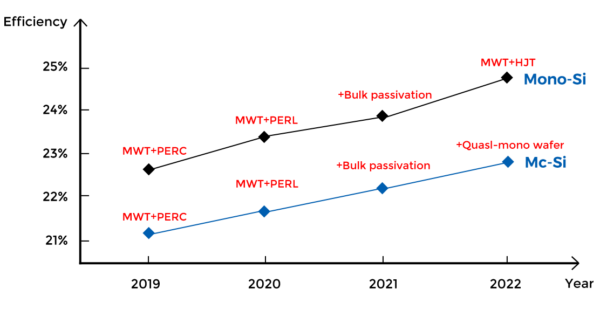
Graph: Sunport Power
“Sunport has combined two advanced technologies to get a technology that’s superior to either,” said Professor Martin Green, who has been Chief Scientific Officer at Sunport since mid 2018 (in addition to fulfilling his now part-time professorship with UNSW and other roles).
Although Green says, “Most of the work on the technology had already been done,” when he came on board, his long association with Sunport CEO, Dr Fengming Zhang who was also present at the Australian launch of the MWT module range, points to collaboration and sharing of knowledge over time.
Zhang achieved his doctorate in physics at the University of Newcastle, and was recruited in 1996 by Green and his UNSW colleagues to work with Pacific Solar, a spin-off company of the university, which Green describes as “the training ground for the whole future photovoltaic industry”. Zhang and UNSW colleague Zhengrong Shi would go on to set up Suntech, the pioneering company of the Chinese PV industry.
A couple of solar milestones later, Zhang became head of Nanjing Sunport Solar Power, which is now the only company worldwide to commercialise MWT technology.
MWT modules are less stressed
MWT abandons traditional ribbon contacts which are known to cause stress and potential micro cracks in solar cells. “Metal wrap through allows you to get much more current from the front side of the cell through to the back side, without the need for as many holes in the silicon wafer,” explained Green, who added that the ribbons had also caused 3-4% loss of output because they “shaded” the front of the cells.
Although the manufacture of MWT cells requires some increased investment in equipment over current production lines, Green says savings from simplification of other processing steps, and a conversion efficiency closer to more expensive technologies such as heterojunction technology (HJT), results in “a very good compromise between cost and efficiency”.
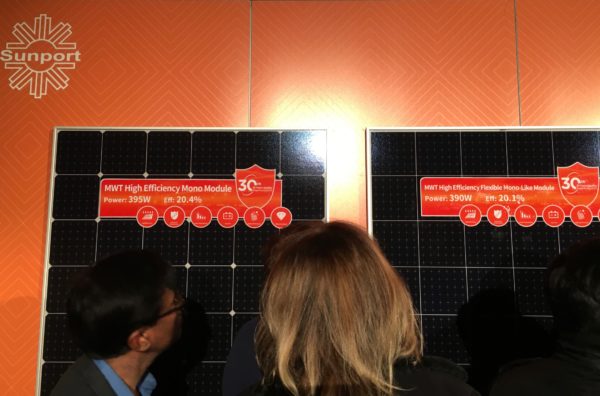
Image: pv magazine
The Sunport product line of panels achieves efficiencies of between 18.4% to 20.3%.
Pricing of Sunport panels has not yet been set in Australia, but Harry Chami, Business Development Manager at Solar Juice says, “it will sit between entry-level and mid-range panels” currently on the market when the first Sunport modules arrive in mid to late August.
Applications for Sunport MWT in each solar sector
Chami expects the increase in panel output will see smaller homes with roof space that might previously have accommodated only 3 kW of power utilising the 330 W Sunport panels to achieve 5 kW systems.
At commercial-scale installation, Chami says “government contracts are now specifying a minimum of 20% efficiency”. The pricing of Sunport panels will make them competitive against higher-end panels currently providing such performance levels.
Sunport’s range also includes a flexible module which can be bent around a 25 cm radius. “The way the cells are interconnected has particular advantages in terms of the stress you get when you bend a module,” explained Green, “so it’s really well suited to making flexible modules”.
The reduced weight of Sunport’s flexible module drew great interest from commercial solar installers at the launch. Huon Hoogesteger, Managing Director at Smart Commercial Solar says his work in the commercial space is often stymied by the “slender” construction of large commercial buildings in Australia.
Hoogesteger explained that such buildings commonly conform to Australian standards which do not need to consider, say, the extra weight of winter snow that structures must contend with in the northern hemisphere, and as a result he says, there are “hectares and hectares, square kilometres” of commercial rooftops that are also unable to support significant solar installation. Sunport’s lightweight flexible panel offers a high-efficiency potential solution for this sector of the market.
The warranty factor
Social entrepreneur, broadcaster and author Jon Dee, who MC’d the event, is also Australian co-ordinator of RE100, the global organisation that helps businesses commit to 100% renewable energy. He mused over the “potential for Sunport’s 30-year warranty to benefit solar power purchase agreements”. Dee said companies entering into a 10-year PPA are often concerned about the risk posed by module performance and potential degradation over time.
“If you can ensure that the panels you’re buying have a minimum performance warranty as these do, it can help take the risk out of it and make solar PV a more compelling proposition,” he said.
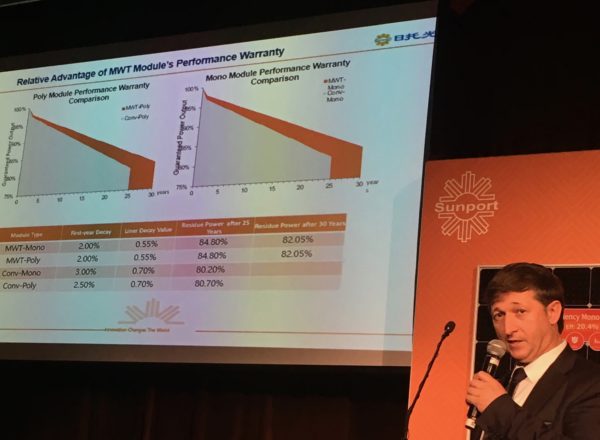
Image: pv magazine
Sunport Power modules have been extensively tested by product assurance company TÜV Nord, which has shown degradation of the panels to be less than 2% in their first year of operation, and less than 0.03% over subsequent years.
PICC and Lloyd’s warranties guarantee power output of no less than 80% after 30 years, and provide 12-year replacement cover of faulty Sunport panels.
“We believe that technologies such as this give our retailers an opportunity to get ahead of the market that’s becoming more competitive and harder to play in every day,” said Michael Ziada, Marketing Manager at Powerark.
Chami agreed and added, “We hope Sunport brings down pricing to a level which allows every consumer to have a highly efficient and reliable solar panel.”
This content is protected by copyright and may not be reused. If you want to cooperate with us and would like to reuse some of our content, please contact: editors@pv-magazine.com.





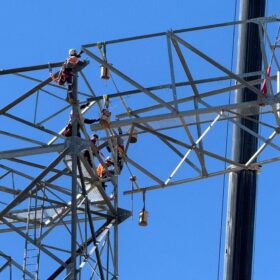

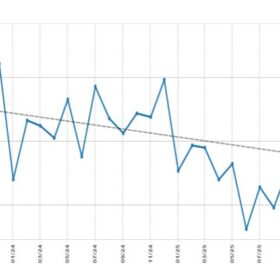

Is the 30 years warranty included both the rigid pv panel and flexible pv panel? How can the warranty for plastic materials of flexible pv panel?